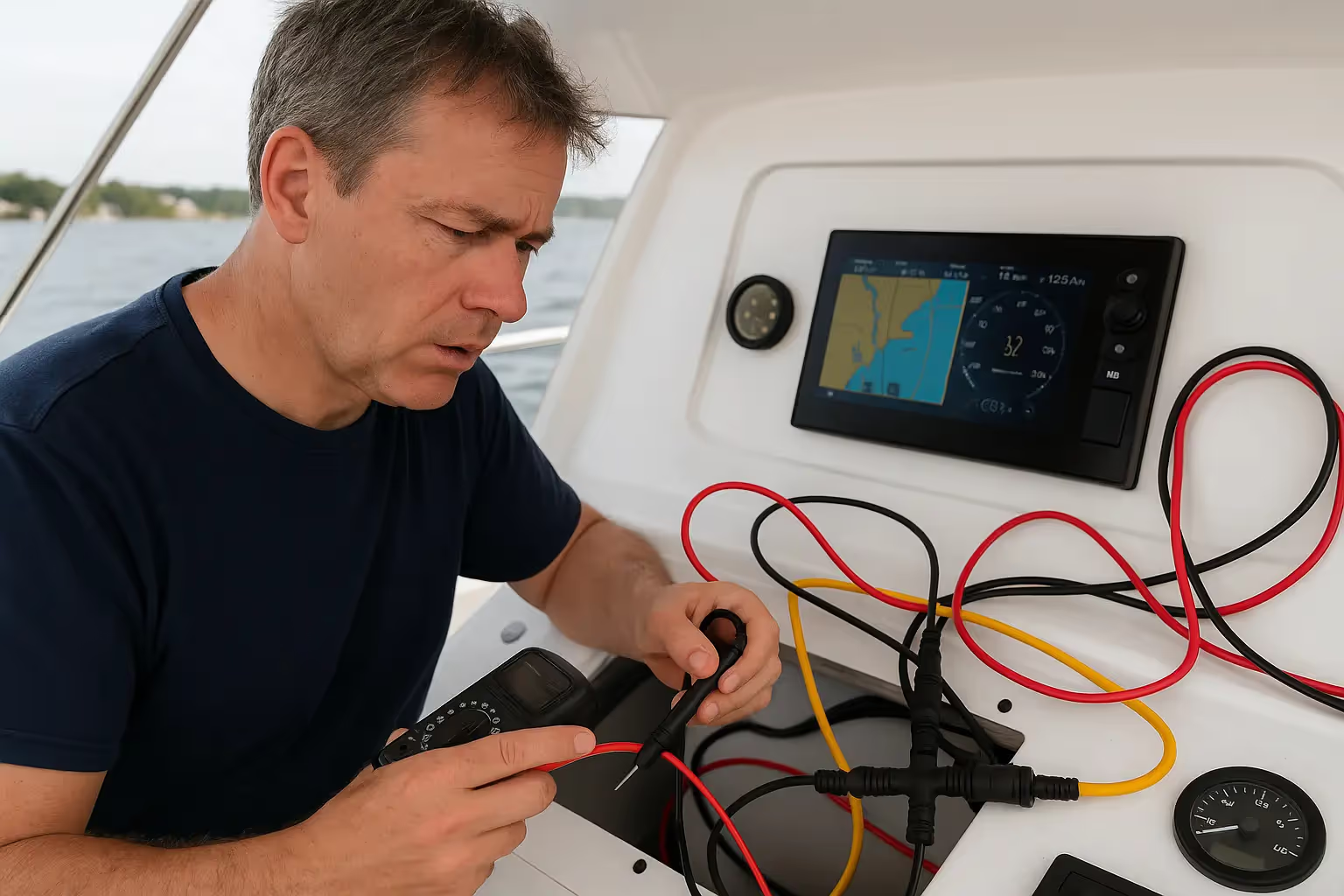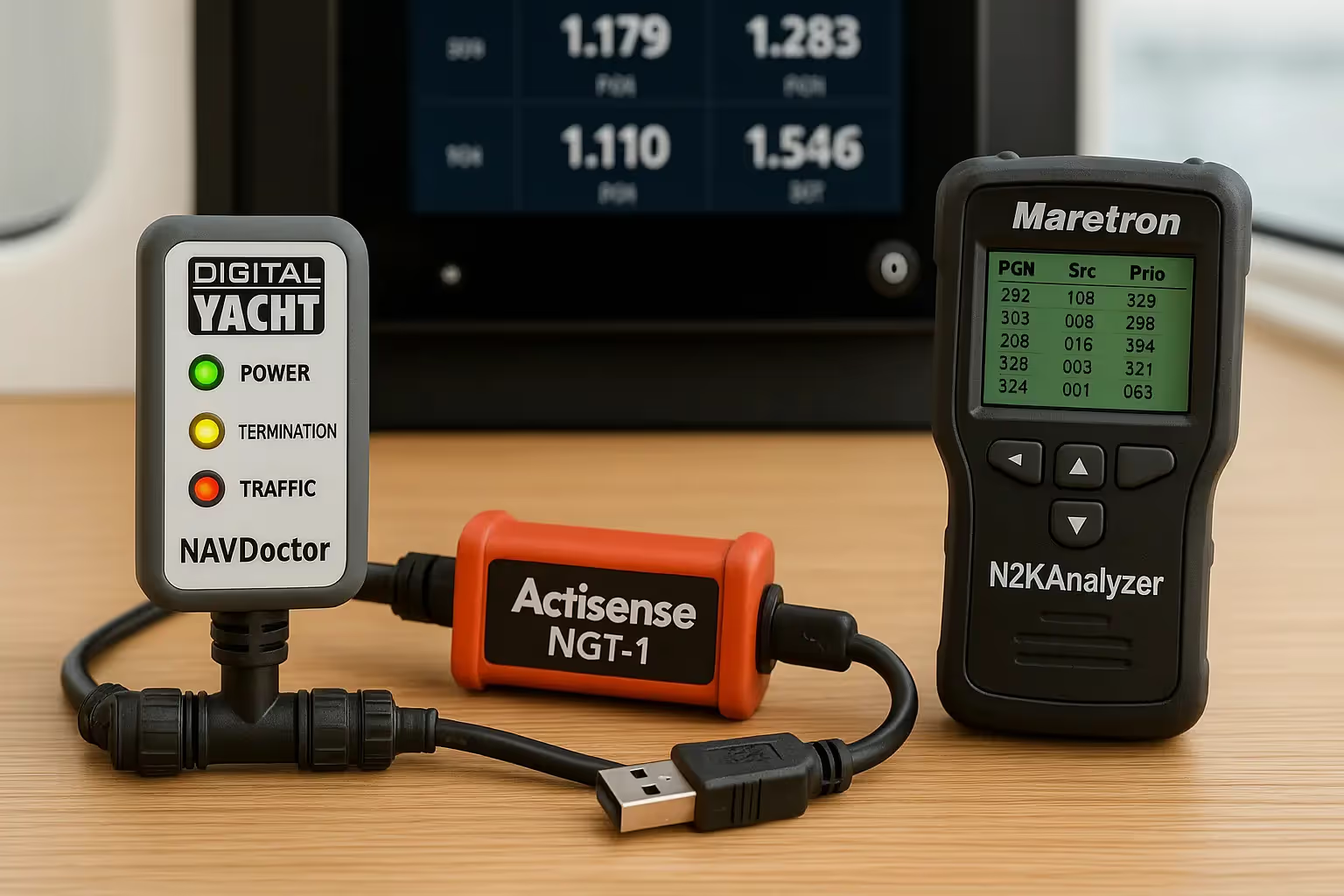Anchoring Safety: Navigating with Assurance

Section 1: Anchor Basics - Anchor, Chain, Rode, and Windlass
Anchoring your vessel effectively begins with understanding the foundational components: the anchor, chain, rode, and windlass. Let's dive into each of these elements to better understand their importance in ensuring a secure anchorage.
Anchor: The anchor is the primary tool used for securing your vessel to the seabed. There are various types of anchors, each designed to perform optimally in different conditions such as mud, sand, or rocky bottoms. Successful anchoring manoeuvres require an understanding of the characteristics and proper use of anchors.
Anchor Chain: Anchor chains are essential to the anchoring system, providing weight to enhance the anchor's grip on the seabed. The weight of the chain helps in maintaining tension, preventing the anchor from dragging and improving its holding power. Proper selection and maintenance of chains are crucial to ensure their effectiveness.
Rode: The rode is the line connecting the anchor chain to your vessel. It acts as an extension to the anchor chain to the boat and can absorb shock loads caused by waves and wind shifts when the chain is fully payed out. Choosing the right type and length of rode is essential for anchoring safely and securely in diverse conditions. Ensuring the rode is securely attached to the boat is essential.
Windlass: This is a mechanical, electrical, or hydraulic device used for raising and lowering the anchor. It plays a crucial role in making the anchoring process manageable, especially for larger vessels or in adverse weather conditions. Regular maintenance and proper operation of the windlass are necessary to ensure its reliability when anchoring.
Understanding and mastering these anchor basics is fundamental for all sailors. With knowledge of the anchor, chain, rode, and windlass, you'll be well-equipped to navigate various anchoring situations confidently and securely.
Section 2: How an Anchor Works
An anchor serves as the steadfast link between your vessel and the seabed, providing stability and security in various conditions. Understanding the mechanics of how an anchor works is crucial for ensuring a successful anchoring experience.
An anchor secures a vessel by leveraging the holding power of the seabed. When deployed correctly, the anchor's design allows it to penetrate the seabed, creating resistance against wind and waves. Plow, fluke, and mushroom anchors are among the various kinds of anchors that are designed to work well in specific bottom conditions, such as rocky, muddy, or sandy.
Setting the anchor involves lowering it to the seabed and allowing it to dig in. A well-set anchor firmly embeds itself in the seabed, which prevents the vessel from drifting. One common technique for ensuring a secure set is the "set and test" method. Once the anchor has been dropped, the vessel is gently backed down or the anchor chain is tensioned to confirm that the anchor is firmly lodged in the seabed.
Testing the anchor's hold is vital, especially in changing conditions or when expecting strong winds or currents. Vigilance is key, as an improperly set anchor can greatly compromise the safety of the vessel and all on board. If possible, try to dive on the anchor to check the hold and ensure that you are not entangled.
Additionally, understanding the scope of swing is important. This refers to the arc or range within which a vessel can safely move around its anchored position. Factors like wind direction, current, and nearby vessels determine the swing radius and need to be considered when selecting an anchoring spot.
Section 3: Choosing a Spot - Spotting Good Holding Ground
Choosing the right anchoring spot is crucial for a safe and successful outing on the water. Understanding what constitutes a good holding ground and how to identify it is also essential.
Good holding ground generally consists of sandy or muddy bottoms, as this allows the anchor to penetrate deeply and hold securely. These substrates offer better resistance to dragging and ensure a stronger grip, especially in adverse weather conditions.
Refer to nautical maps when searching for a suitable anchorage location to find regions with consistently smooth seabed characteristics. Look for sandy patches or mud flats indicated on the charts, as these areas are likely to provide optimal holding ground. Avoid anchoring over rocky or grassy bottoms, which can hinder the anchor's ability to set properly and increase the risk of dragging.
One should also consider environmental factors when choosing an anchorage. Protecting marine life and sensitive habitats is paramount. Anchoring in areas with seagrass beds or coral reefs can cause irreparable damage to these ecosystems, disrupting marine habitats and biodiversity. It can also lead to large fines in many areas. Always anchor in designated areas or sandy patches to minimise the environmental impact and preserve marine ecosystems.
Always be mindful of water depth and proximity to shore when choosing an anchoring spot. Make sure that there is sufficient water depth for your vessel's draft and allow for tidal fluctuations and wind swings. You should also maintain a safe distance from shore to avoid running aground during changing tides or rough weather.
Section 4: Advanced Anchoring Techniques
Your ability to anchor can be greatly improved by learning some advanced techniques, which will increase stability and security in difficult situations. The following are some helpful techniques and strategies:
Strategic Positioning: In crowded anchorages, strategic positioning is crucial to avoid tangling with other vessels and ensure enough swinging room. Take note of where existing boats are anchored and try to position your vessel in line with theirs, while still maintaining a safe distance to prevent collisions or entanglements.
Multiple Anchors: In extreme conditions, like strong winds or currents, using more than one anchor can enhance stability and provide added security. Known as "Bahamian mooring" or "tandem anchoring," it involves deploying two anchors in tandem from the bow and stern or opposite sides of the vessel. By distributing the load across multiple anchors, you can reduce the risk of dragging and have better control in adverse weather.
Anchor Snubbers: This is a valuable tool for mitigating shock loads and reducing strain on the anchor and windlass during harsh weather. This device attaches to the anchor rode and directly to the forward mooring cleats and acts as a shock absorber, absorbing sudden jerks and movements caused by waves and wind. By relieving tension on the anchor rode, anchor snubbers prevent damage to the anchor gear and ensure a more comfortable and secure anchorage.
Kellet or Anchor Buddy: A kellet, also known as an anchor buddy, is a weight attached to the anchor rode to increase catenary—the curve formed by the rode when under tension. With this tool, sailors can improve the anchor's holding power by enhancing its ability to set and maintain a secure grip on the seabed. Kellets are especially useful in areas with strong currents or tidal flows, where additional weight can help stabilize the anchor and prevent dragging.
Conclusion
Mastering the art of anchoring is about more than just making sure your boat stays put, it's about coexisting harmoniously with the marine environment while ensuring the safety of the vessel and crew. As you go on to practice these techniques, remember that every anchoring experience is a new opportunity to learn and improve.
FAQs
What makes a good anchor for beginners?
A good beginner's anchor is typically a plow or fluke type, known for their versatility and ease of use in various seabed conditions.
How do I know if the anchor is properly set?
Once the anchor has been set, gently pull on it with your boat's engine in reverse. If the anchor holds without dragging, you can be sure that it's properly set. You can also keep an eye on movement and feel for vibrations through the rode, as these also indicate stability.
Can all types of seabeds provide good holding ground?
No, seabeds vary in their holding capacities. Sand and mud are generally good, while rocky or weedy bottoms may prevent the anchor from properly setting.
What should I do if my anchor gets tangled with another?
If tangled, communicate with the other vessel's crew. Gently lifting your anchor and allowing the other vessel to retrieve theirs first can often resolve the situation without damage.
Why is it important to avoid anchoring in seagrass and coral areas?
Anchoring in these areas can cause a lot of damage to sensitive ecosystems vital for marine life. It also leads to fines or sanctions on the offending vessel.















